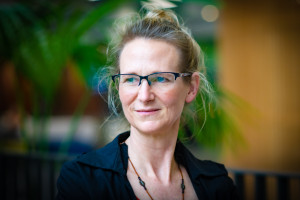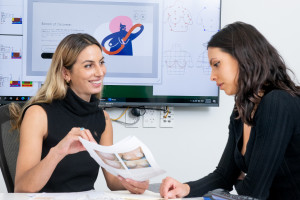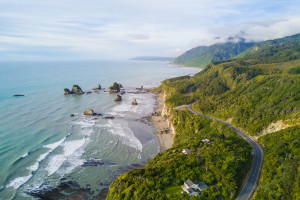At Wellington UniVentures, we work across a variety of different impact driven innovations. We grow Wellington-led research into real (and virtual) world applications for creative, social and commercial sectors.
For us, it’s not just about supporting an idea to have financial impact—we help to shape research which has social impact too. Check out some of our stories below which have the potential to help people across the globe. From vaccinations for greater protection against malaria, to new educational tools to support students who identify as twice-exceptional. We see the potential in these ideas and give them the support to grow.
A bright future for twice-exceptional teens
 There are currently a number of barriers for twice-exceptional teens needs being identified and catered for in the classroom. However, Holly is developing a screening tool to be used in schools to help identify students who would benefit from having a full assessment by professionals to determine if they are twice-exceptional. Holly is also developing resources for teachers and whānau to support twice-exceptional teens and their learning.
There are currently a number of barriers for twice-exceptional teens needs being identified and catered for in the classroom. However, Holly is developing a screening tool to be used in schools to help identify students who would benefit from having a full assessment by professionals to determine if they are twice-exceptional. Holly is also developing resources for teachers and whānau to support twice-exceptional teens and their learning.
A twice-exceptional child’s giftedness is often concealed by their specific learning disability, but these tools aim to help students access the support they need at school while also nurturing their strengths.
Read more about Holly's work here.
The race for stroke diagnosis
 Stroke is a global issue and in New Zealand alone, one person is affected by stroke every 45 minutes. Early stroke diagnosis is crucial as earlier treatment results in a greater chance of recovery and a reduced likelihood of permanent disability or extensive rehabilitation.
Stroke is a global issue and in New Zealand alone, one person is affected by stroke every 45 minutes. Early stroke diagnosis is crucial as earlier treatment results in a greater chance of recovery and a reduced likelihood of permanent disability or extensive rehabilitation.
Dr Sergei Obruchkov and his team at Te Herenga Waka, as well as researchers at the University of Otago, have developed a novel portable MR device (Axana), which can be brought directly to the patient. The Axana is extremely portable, weighing only 20kg and can run off an ambulance and car battery.
Axana is also competitively priced making it possible to outfit a whole fleet of ambulances for the same price as a single CT or an MRI machine.
Learn more about Sergei's work here.
The right fit
 Globally, over 80% of women are wearing the wrong size bra due to current limitations in shape and size and fitting methods. This is more notably an issue for women who have experienced cancer and undergone reconstructive surgery, who not only have an issue with fit but rely on bras to increase confidence and symmetry.
Globally, over 80% of women are wearing the wrong size bra due to current limitations in shape and size and fitting methods. This is more notably an issue for women who have experienced cancer and undergone reconstructive surgery, who not only have an issue with fit but rely on bras to increase confidence and symmetry.
Sizes and designs are limited, but this technology developed by Xuxu and Aida supports a change in the way women are measured and bras are designed and manufactured.
Read more about Xuxu and Aida's work here.
Reducing carbon dioxide emissions with Green Steel
 In New Zealand, steel and iron production is the single largest industrial source of CO2 emissions, representing 55% of industrial emissions and around 5% of total gross emissions.
In New Zealand, steel and iron production is the single largest industrial source of CO2 emissions, representing 55% of industrial emissions and around 5% of total gross emissions.
Researchers at Te Herenga Waka and Robinson Research Institute have demonstrated how hydrogen can be used instead of coal during the steelmaking process, potentially eliminating carbon dioxide emissions from New Zealand’s steel industry.
Read more about Green Steel here.
